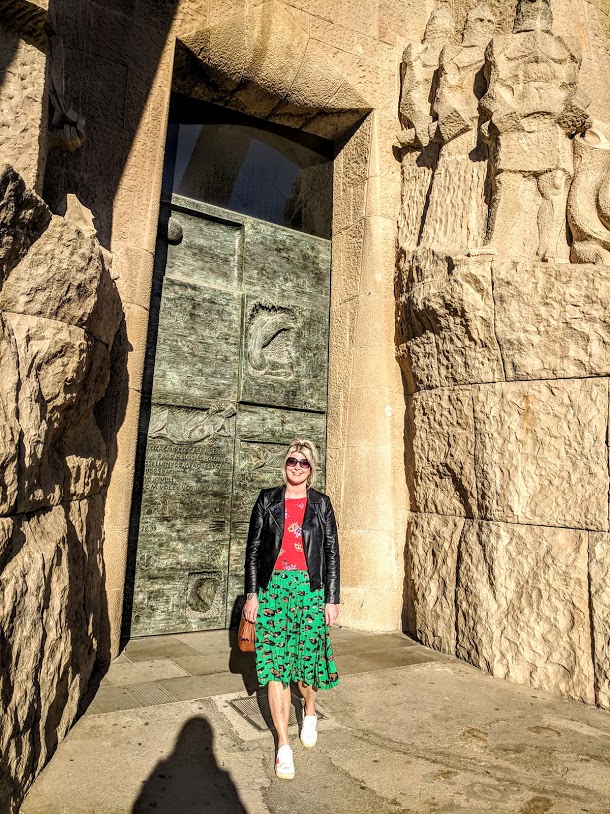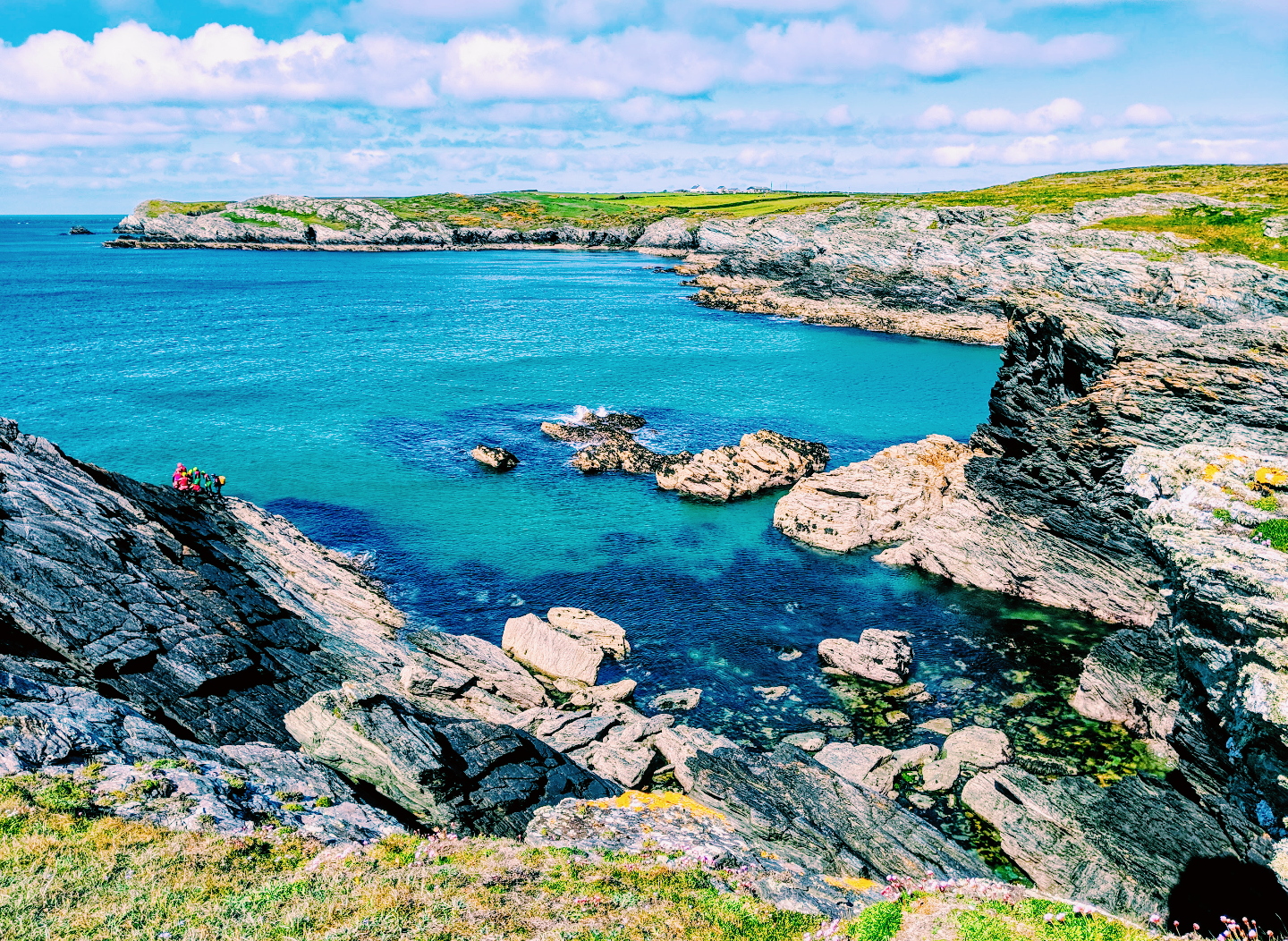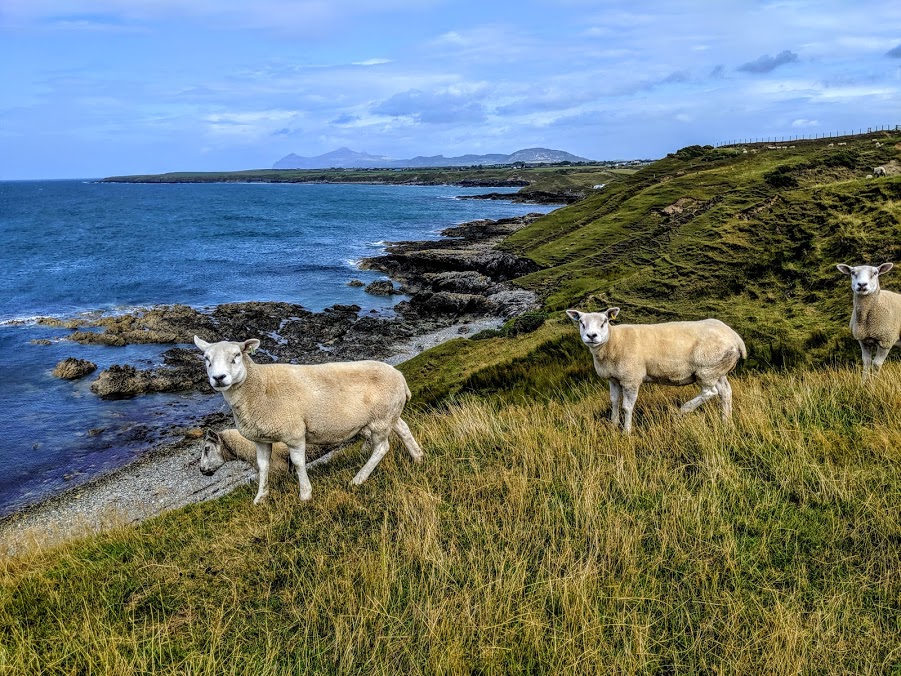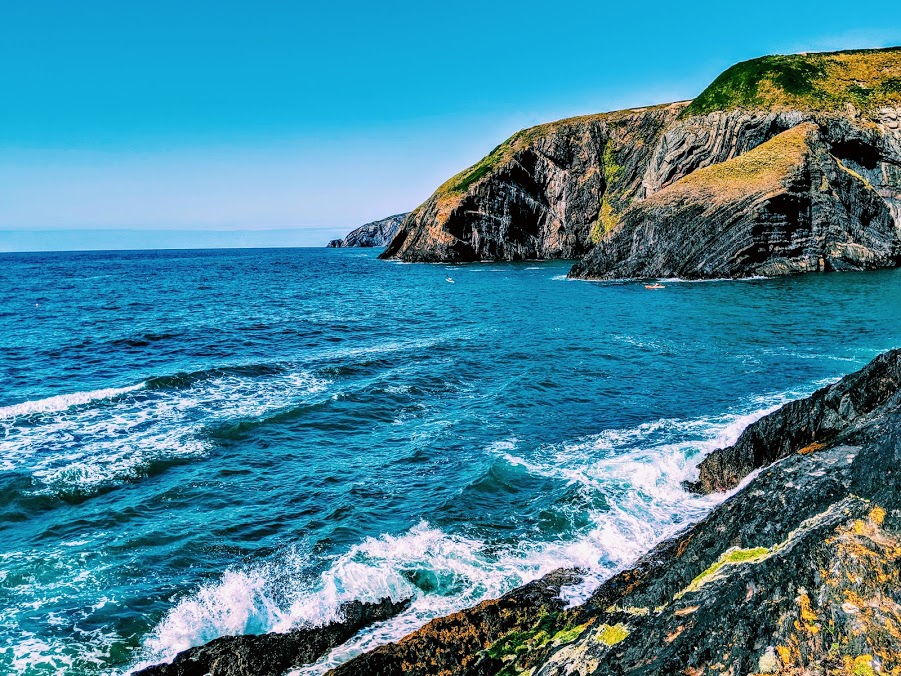“In the Sagrada Familia, everything is providential.” Antoni Gaudi
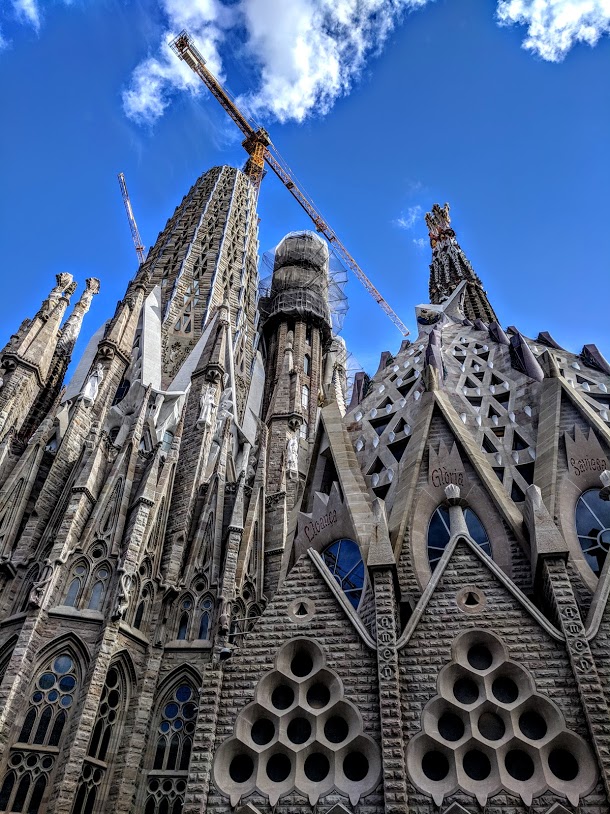
I didn’t realise just have many pictures I took on this trip and I promise we are getting close to the end of my Barcelona posts. as ever I have been awful at editing the number of pictures, not to mention there are so many beautiful things to see in Barcelona! There are no amount of pictures that could ever show just how beautiful Sagrada Familia is in real life, from the outside and with its history it seems pretty damn impressive. However, it is not until you walk into the church that your breath is truly taken away! I have visited a lot of churches in a fair few countries and I am yet to find one that comes even close to this one. The second I walked in I felt overwhelmed by its height, light and curves, it really stopped me in my tracks I can’t imagine finding anywhere on earth any more beautiful. This really is a work of art and it may have taken well over a century to get to this part of its construction but beauty can’t be rushed!
In 1882, construction of Sagrada Família started under architect Francisco de Paula del Villar. In 1883, when Villar resigned,[6] Gaudí took over as chief architect, transforming the project with his architectural and engineering style, combining Gothic and curvilinear Art Nouveau forms. Gaudí devoted the remainder of his life to the project, and he is buried in the crypt. At the time of his death at age 73 in 1926, when he was run down by a tram, less than a quarter of the project was complete
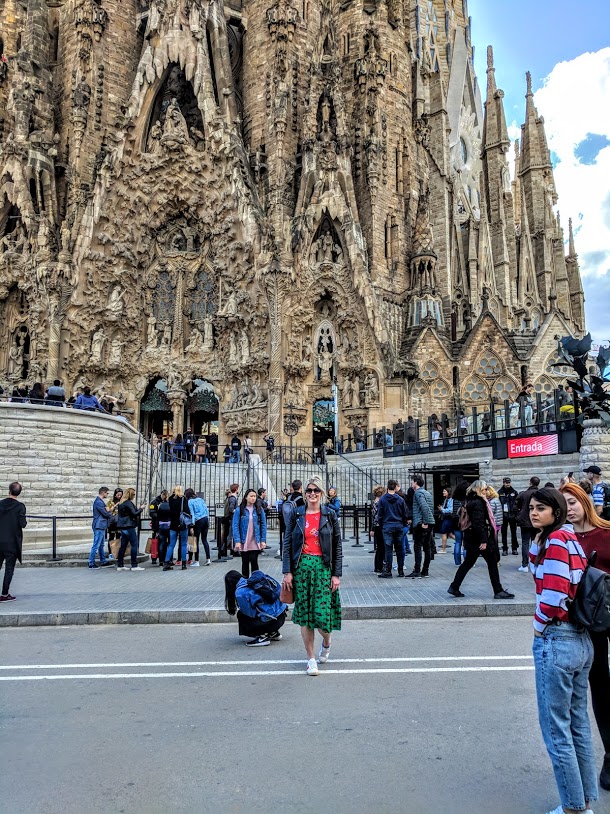
As always dressed as an unsupervised five-year-old! And very happy about the fact!

There are three facades at La Sagrada Familia, and the Nativity Facade was completed by Gaudí himself. The Passion Facade and the Glory Facade were built much later, and when the sculptures of Christ on the crucifix were added to the Passion Facade by Josep Maria Subirachs, many people argued that they were too abstract and took away from Gaudí’s style and vision as an artist and architect.
When La Sagrada Familia is completed, it will have 18 towers. 12 of the towers will represent the apostles, four of them will represent the evangelists, one will be designated for the Virgin Mary, and of course the last one, the highest one in the middle, will represent Jesus Christ. However, right now there are only eight towers

La Sagrada Familia is home to the tomb of Antoni Gaudí, who was unfortunately killed a few days after being hit by a tram. Located in the underground level of the building, visitors can come see the tomb for themselves. The tomb is surrounded by four chapels, each dedicated to a different figure. Gaudí’s tomb is held in the chapel dedicated to the El Carmen Virgin.
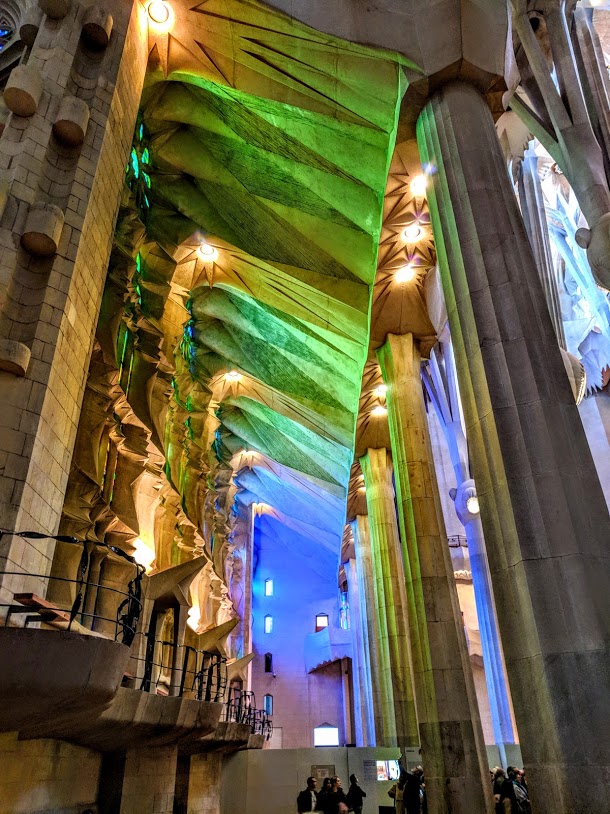
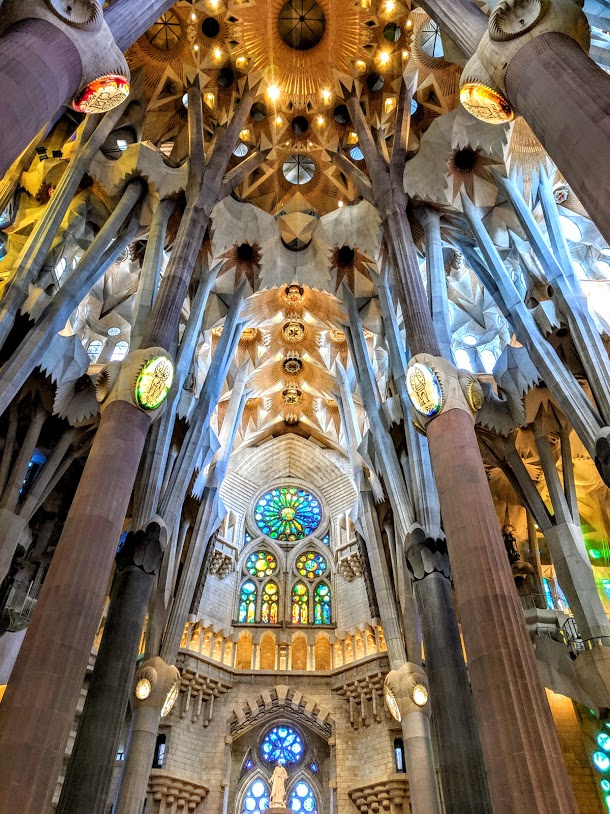
When La Sagrada Familia is completed, it will be tallest religious building in all of Europe. The central tower in the middle will reach 170 meters tall. Despite having a powerful height, Gaudí believed that nothing man-made should ever be higher than God’s work. It is no coincidence that the ultimate height will be one meter less than Montjuïc, the mountain in Barcelona, which is also the city’s highest point.
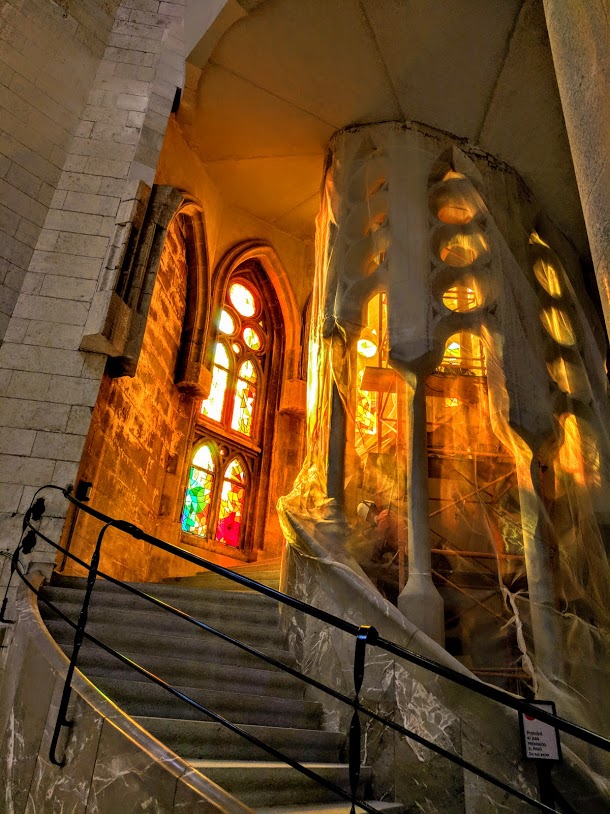
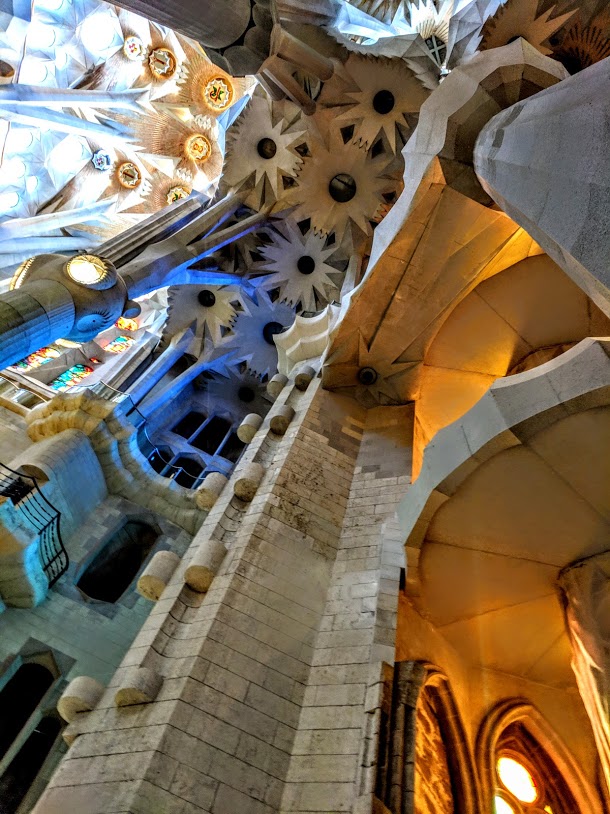
The columns of the interior are a unique Gaudí design. Besides branching to support their load, their ever-changing surfaces are the result of the intersection of various geometric forms. The simplest example is that of a square base evolving into an octagon as the column rises, then a sixteen-sided form, and eventually to a circle. This effect is the result of a three-dimensional intersection of helicoidal columns (for example a square cross-section column twisting clockwise and a similar one twisting counter-clockwise).
Essentially none of the interior surfaces are flat; the ornamentation is comprehensive and rich, consisting in large part of abstract shapes which combine smooth curves and jagged points. Even detail-level work such as the iron railings for balconies and stairways are full of curvaceous elaboration.
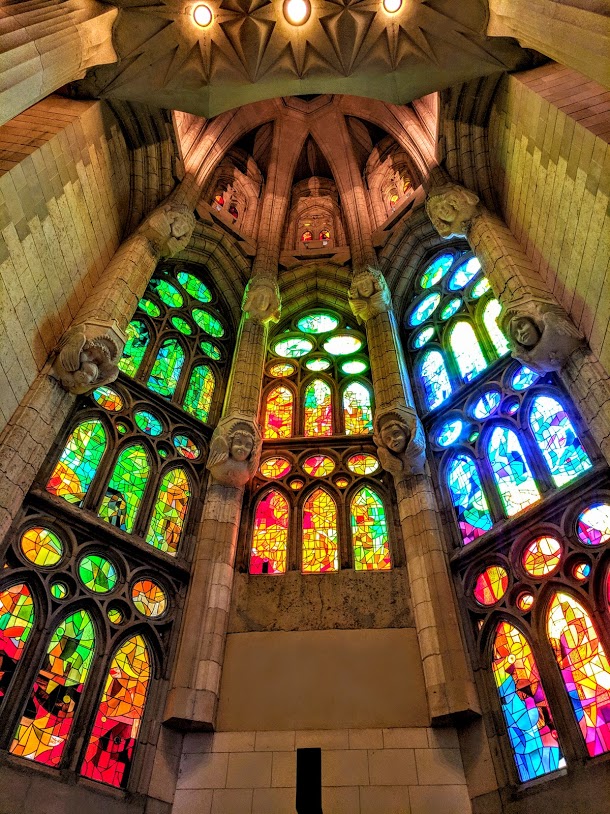
Antoni Gaudí was fully aware that he would never see the finished product of his grand work, the Sagrada Familia. For this reason he left a few indications about the stained glass windows that would eventually grace its walls. He advised that the interior windows must be dark, gradually opening up to a translucent white for good illumination.
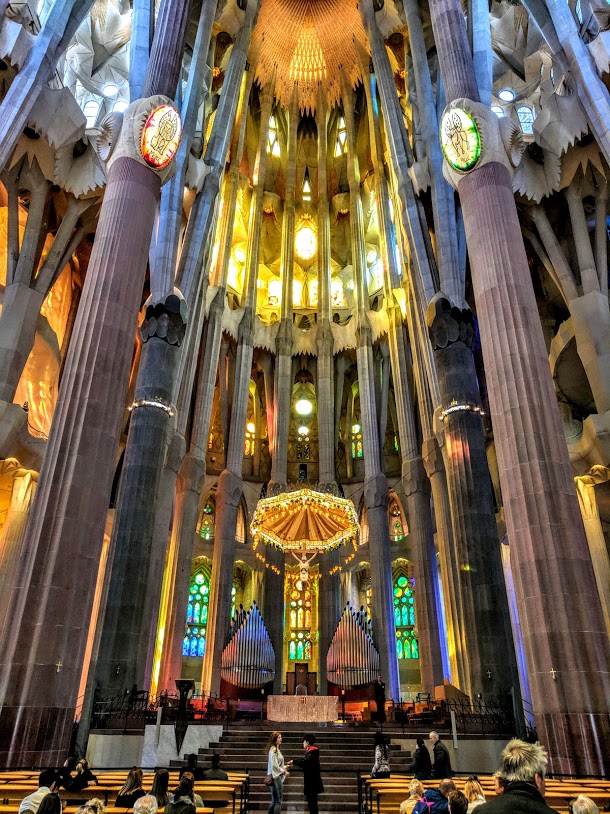
Gaudi didn’t just want his church to be seen from every part of Barcelona. He wanted it to be seen from far into the ocean – as guiding light for the sailors and ships out there. To ensure it was useful for seafarers, he had glass mosaics embedded at its highest points. These glass mosaics reflect both the sun and moonlight and act as beacons.
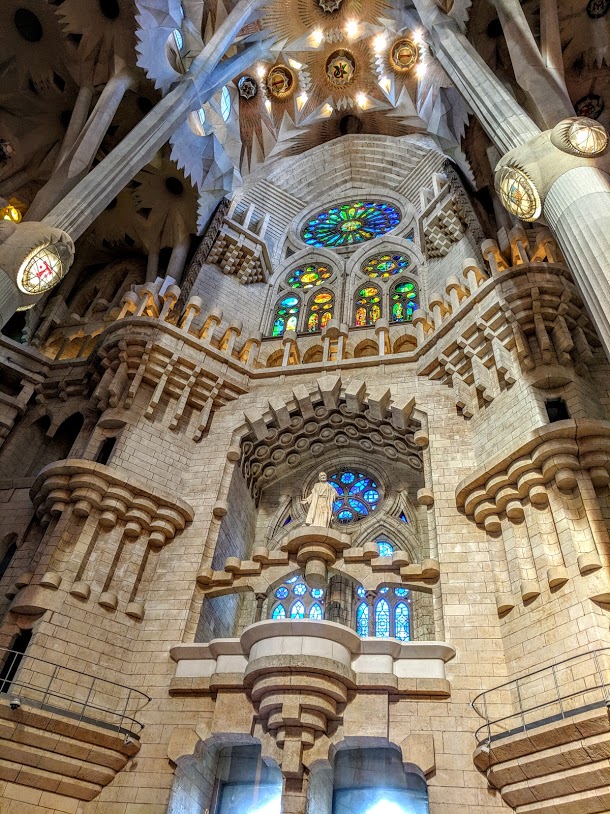
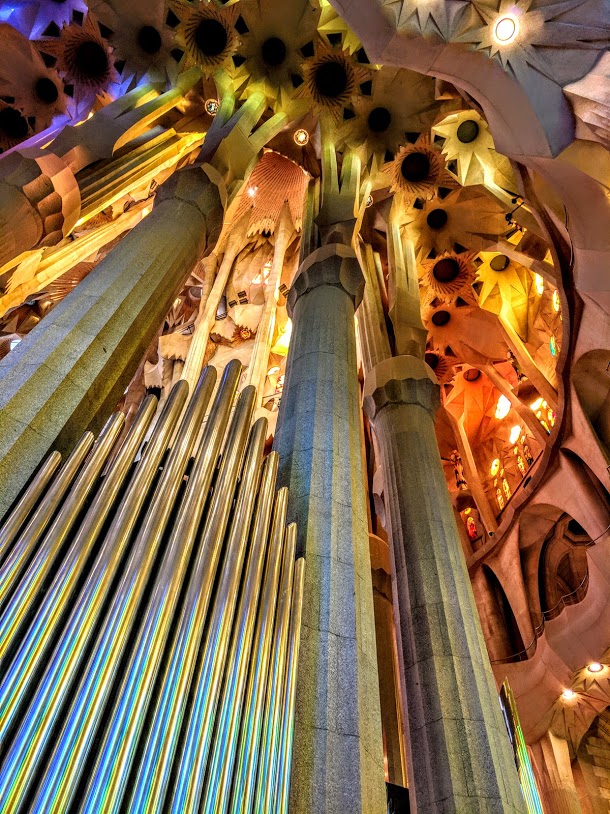
“There is no reason to regret that I cannot finish the church. I will grow old but others will come after me. What must always be conserved is the spirit of the work, but its life has to depend on the generations it is handed down to and with whom it lives and is incarnated” Antonio Gaudi
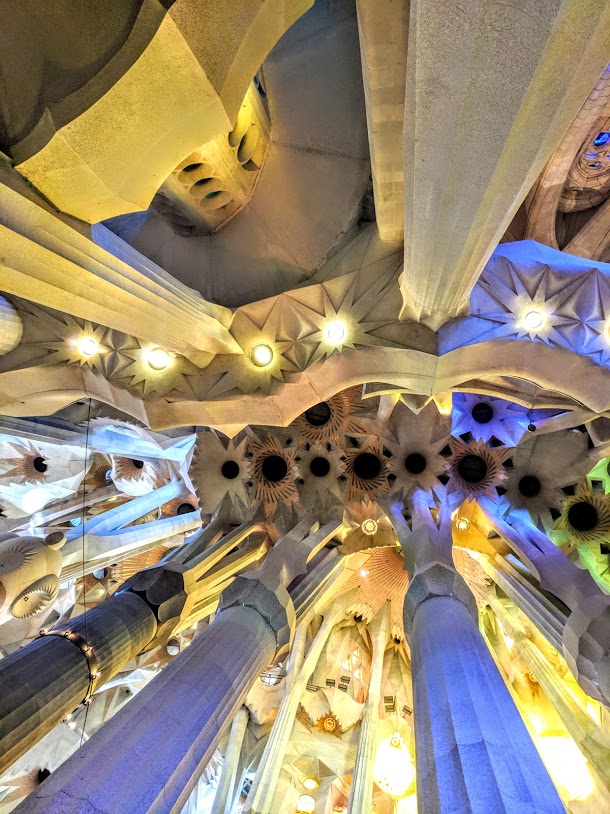

“Colour in certain places has the great value of making the outlines and structural planes seem more energetic.” Antonio Gaudi
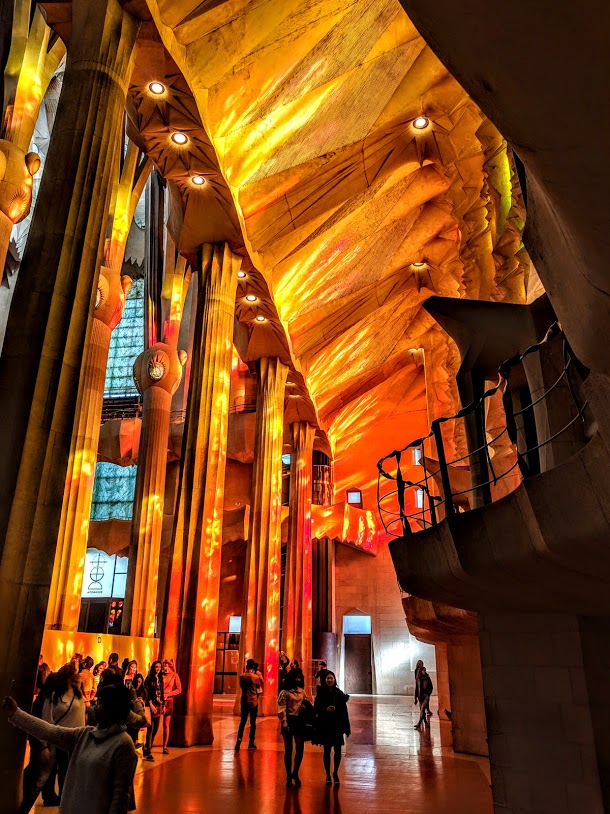
La Sagrada Familia is a Basilica and received the name of Expiatory temple because its construction is not supported by any government or church funds. During the earliest stage of its building, it was funded by private patrons. During decades, La Sagrada Familia received private funds from donations or alms. Those funds were used exclusively to the construction of Gaudí’s dream. Nowadays, donations to the Sagrada Familia are still made but most of the money collected comes from entrance tickets.

Very often, the most colourful part of a Gothic cathedral is the highest reaches of the stained-glass windows, where there is more unobstructed sunlight outside. In the lower sections, however, where there may be shadows of trees or other buildings, the colour filter is less intense. This distribution often aims to offset one effect with the other, seeking a sort of balance, so that there is less filter where there is less light and vice versa.
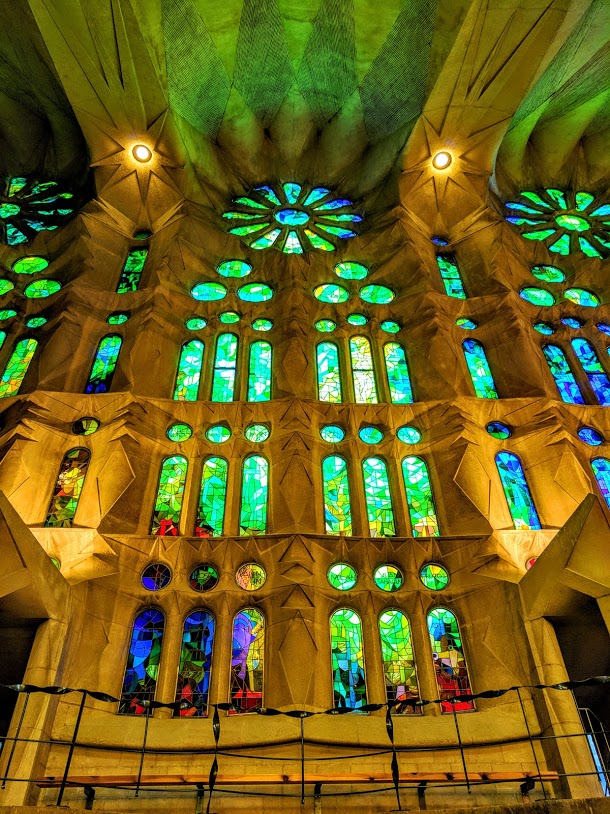
At the Sagrada Família, however, it is just the opposite: Gaudí sought out maximum contrast. The most transparent stained-glass windows are those highest up, so that the light can stream in and illuminate the mosaics and golden vaults that characterise the nave. However, the illustrations and texts are in the lower windows, where visitors can see and read them better.
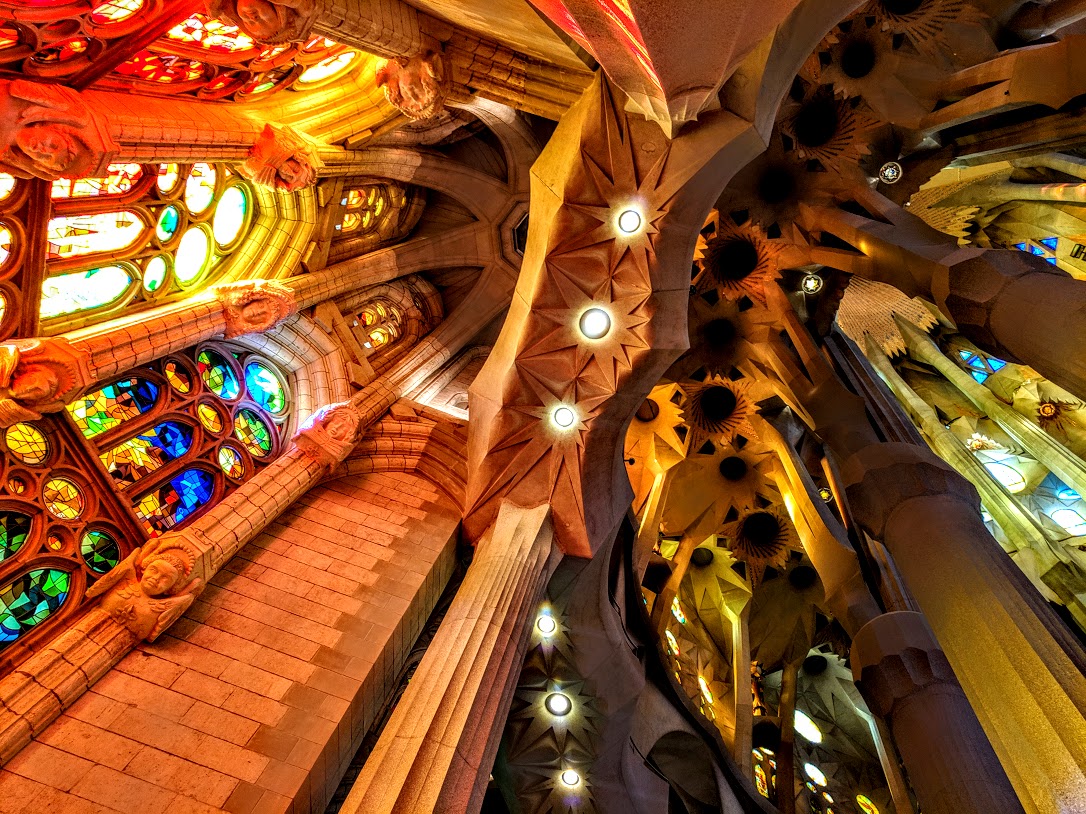
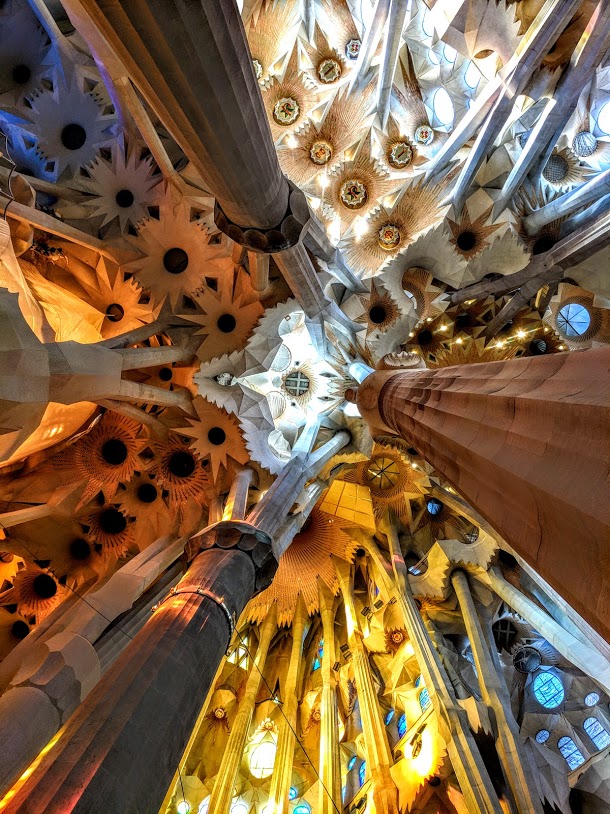
Gaudi was always known to take inspiration from nature and for his masterpiece, he did just that. Sagrada Familia interior is filled with symbols of nature, and the best example is the ceiling of the Basilica.
Even though these ceilings are 200 feet high (61 meters) they are held together by columns which look like trees branching out. As the columns branch out and hold the ceiling, the give the appearance of a thick forest.
